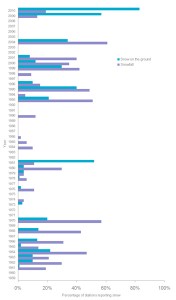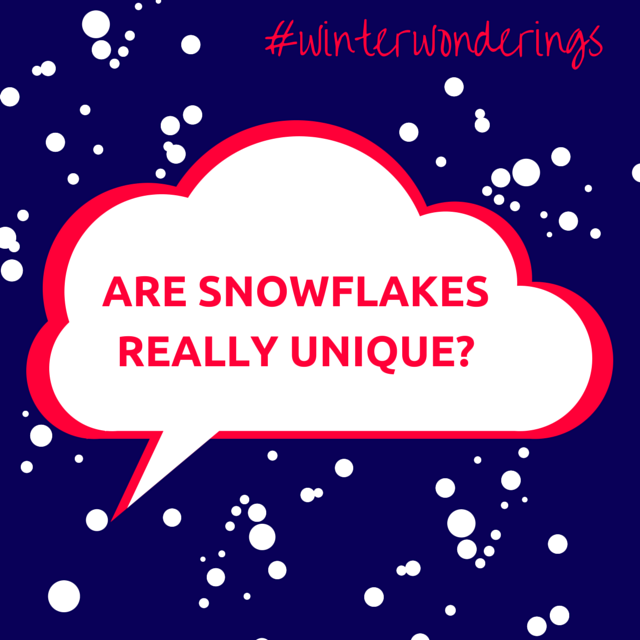Will It Be a White Christmas 2014?
As we get closer and closer to the big day, the question on everyone’s lips is, ‘Will it be a White Christmas 2014?’. The answer to that depends on a number of factors, such as where you live and what we mean by a ‘White Christmas’.
What is a White Christmas?
For most people in UK, a White Christmas is when we have a complete covering of snow on the ground on the morning of 25th December. For others, a single snowflake or flurry of snow is enough to declare it a ‘White Christmas’.
The Americans are more precise, calling a White Christmas when there is a snow depth of ‘one inch or more, on Christmas Morning’. I’m inclined to go with the American definition, but you can make up your own mind!
Where is a White Christmas Almost Guaranteed?
In UK there is no place that we can guarantee a White Christmas. You might be more likely to see snow in the mountains, but some years even the high ground didn’t get snow! The mountain ranges of Europe are a better bet, especially the villages higher up.
In USA there are wide swathes of the country that are pretty much guaranteed NOT to have a White Christmas. Kids who live in Texas or Florida are unlikely to open their windows to a wintery Christmas scene!
The northern states are used to large amounts of snow – you may have seen the pictures like this one in the news recently, when the Buffalo area was hit by freak winter storms. How would you like to shovel a path to this house?
When Will We Know?
Long range weather forecasts are not really reliable, and we won’t know until a few days before Xmas whether it will be a White Christmas. At the time of writing, it is looking like most of UK will be too mild for snow on 25th December, but we will be keeping an eye on the Met Office website in the next week.
Winter Wonderings – Are Snowflakes Really All Different?
It’s a common belief that no two snowflakes are the same, and in a way this is true. No snowflake can ever be completely identical to another, because when you get down to the molecular level they will have slightly different kinds of water molecules, different electrons and different traces of other materials such as specks of dust.
However, if we’re talking only about the appearance and shape of a snowflake, then yes it is possible that some will have duplicates. Snow crystals can vary from fairly simple, hexagonal structures to the more complex and delicate shapes that we commonly think of as snowflakes.
The simple flakes have far fewer molecules than their larger cousins and so it’s entirely possible that you could find two that appeared identical when viewed through a microscope. The more complex structures, however, can have more than a hundred different features and each feature can form in a number of different ways. This makes it highly unlikely that you would ever find two large snowflakes that looked the same – but you could have fun trying!
For a more detailed explanation of the science behind the forming of snowflakes, check out this video
Winter Wonderings – Why Can You See Your Breath When it is Cold?
This is the first in a series of posts by Sam Gouldson called Winter Wonderings. Sam will take a closer look at some of the amazing things that winter brings, such as snowflakes, ice and snow and explain the science behind the season!
You may have noticed that you can see your breath when the weather is cold, especially if you exhale really hard. But what causes this and why doesn’t it happen when it’s warm?
Shooting stars, Weather, and Rocks falling from the Sky!
What do shooting stars, weather and rocks falling from the sky have in common? Are you wondering whether we have gone mad asking such a question? Do rocks ever fall from the sky? Of course they do! You might know them better as “meteorites”, and they are meteors, or rocks from outer space, that fall down to the earth. And what does that have to do with weather? It’s not like they come down like rain! And before you say to yourself “meteor shower”, remember that a meteor is actually a shooting star, a space-rock that burns up in the Earth’s atmosphere. Related, yes, but weather, no.
The weather connection is through another word, generally used to mean “study of the weather”. That word is “meteorology”. As you can see, all three have something in common – the word “meteor”.
So what is this word, and how did it come to mean these different things?
Meteor came into English through French in the late 15th century. In French it was meteore. Very similar, you might think. Does this mean that it is a French word. Not at all. The next question we must ask ourselves is where did French get it from? The answer is from Medieval Latin meteorum, which meant “things in the heavens”. But this is not the end of the tale. Latin took the word from ancient Greek, and in Greek we can analyse the word to see what it really means.
The Greek word μετέωρα (meteora) can be broken into two parts: meta, which means “over, beyond” and aora, which comes from the verb αείρω/ αίρω (aeiro, airo), which meant “to raise, lift up”. Even today, in Modern Greek, αιωρείται (aioreitai) means “it hovers”. All this means that the original meaning of the word was “thing that is raised in the air”. And even in ancient times this developed to mean “things in the sky” and gradually came to have the meaning it does today.
Another interesting point is that the word “air” is in fact from the same root as αείρω (aeiro), which makes it a distant cousin, or cognate, of “meteor”.
Did you know:
One of the largest and most famous meteor craters is to be found in northern Arizona, desert of the U.S. It is 1,200m wide, 170m deep and calculated to be created 50,000 years ago! It is more commonly known as the Barringer Crater.
Title Photography: Mike Lewinski 2013









